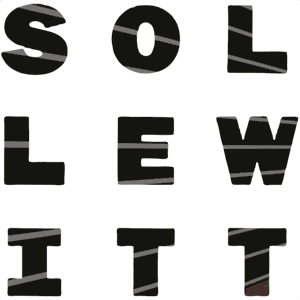A work of art may be understood as a conductor from the artist’s mind to the viewer’s. But it may never reach the viewer, or it may never leave the artist’s mind.
Sol LeWitt was an U.S. artist and a founder of both Conceptual and Minimalism art. LeWitt came to fame in the late 1960s with his wall drawings and "structures" (a term he preferred instead of "sculptures") but was prolific in a wide range of media including drawing, printmaking, photography, and painting. He has been the subject of hundreds of solo exhibitions in museums and galleries around the world since 1965.
According to the principle of his work, LeWitt's wall drawings are usually executed by people other than the artist himself. He would therefore eventually use teams of assistants to create such works. Writing about making wall drawings, LeWitt himself observed in 1971 that "each person draws a line differently and each person understands words differently". Between 1968 and his death in 2007, LeWitt created more than 1,270 wall drawings. The wall drawings, executed on-site, generally exist for the duration of an exhibition; they are then destroyed, giving the work in its physical form an ephemeral quality. They can be installed, removed, and then reinstalled in another location, as many times as required for exhibition purposes.
Two important essays by LeWitt defined the new movement: “Paragraphs on Conceptual Art” (1967) and “Sentences on Conceptual Art” (1969). The earlier text proclaimed: “The idea becomes a machine that makes the art.”
EXTERNAL LINKS:
Sol Lewitt on Wikipedia
Bonnefanten Museum
Images
